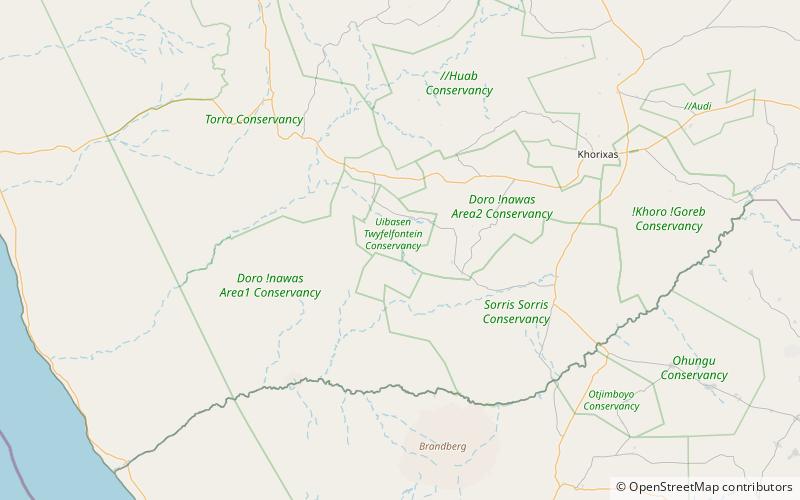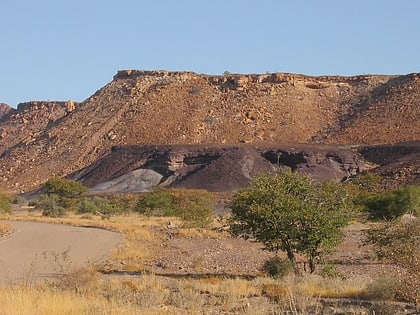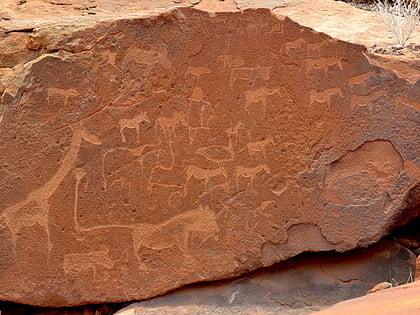Burnt Mountain


Facts and practical information
Burnt Mountain in Namibia stands as a testament to the fiery natural forces that have shaped our planet. This intriguing geological formation is not a volcano as one might initially suspect, but rather it's the result of prehistoric volcanic activity. The mountain, located near the Organ Pipes, another geological curiosity in the Damaraland region, showcases a dramatic spectrum of colors, resembling a landscape scorched by flames.
The phenomenon that gives Burnt Mountain its distinctive appearance occurred around 120 to 150 million years ago during the Cretaceous period. It was during this time that volcanic activity caused organic matter to combust and metamorphic processes to take hold, altering the composition of the rock. The result is a range of colors from fiery reds and deep browns to the charred black, giving the site its name.
Today, Burnt Mountain is accessible to visitors and has become a point of interest for geologists and tourists alike. The best time to view the mountain is at sunrise or sunset when the play of light accentuates its burnt hues, offering a breathtaking sight. While not a volcano in the traditional sense, Burnt Mountain serves as a vivid reminder of the volcanic forces that continue to shape and color the Earth's landscapes.
Kunene
Burnt Mountain – popular in the area (distance from the attraction)
Nearby attractions include: Twyfelfontein.

